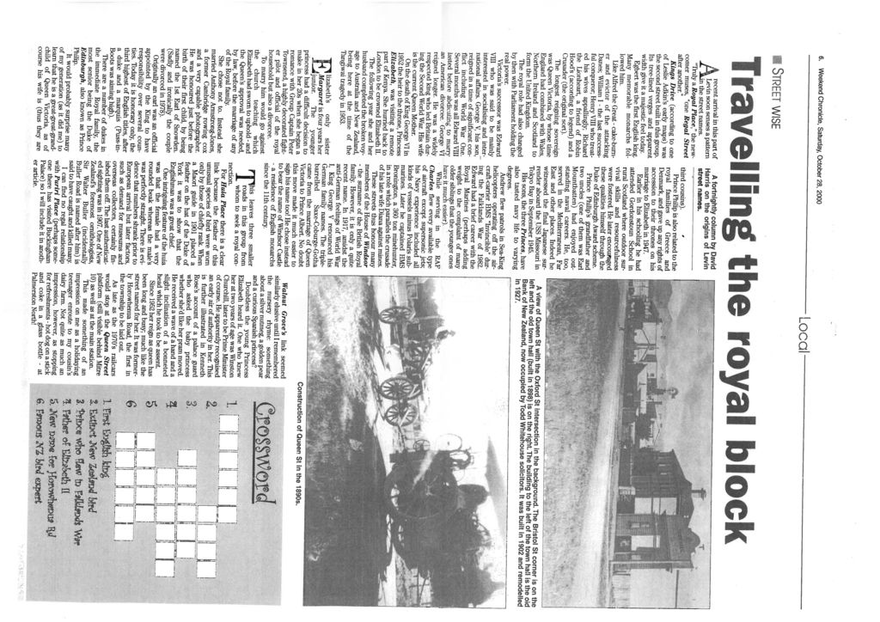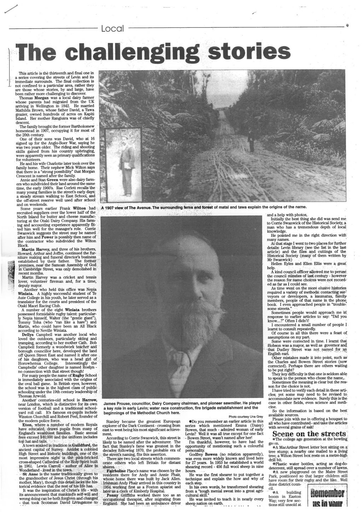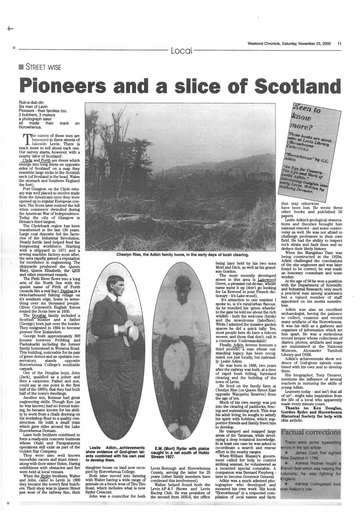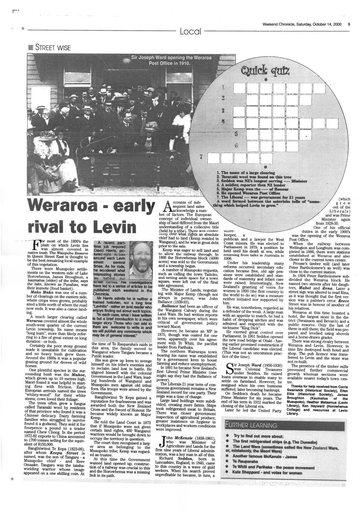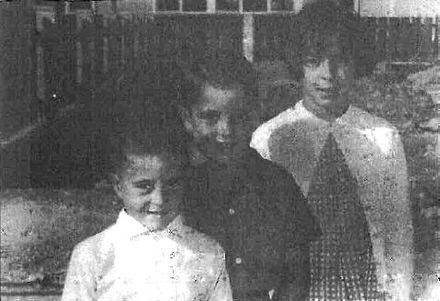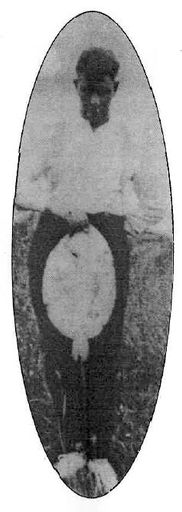Travelling the royal block
- Description
A fortnightly column by David Harris on the origins of Levin street names.
A recent arrival in this part of Levin soon senses a pattern the street names.
"Truly a Royal Place," the new-comer muses, "one Regal Street after another."
Kings Drive (according to one of Leslie Adkin's early maps) was the second street built in this group. Its tree-lined verges and apparent width give it a majestic feel today.
Egbert was the first English king. Many memorable monarchs followed him.
Like Alfred the Great - cake-burner and evictor of the attacking Danes; William I - the last successful conqueror; Henry VIII who treated his wives appallingly; Richard the Lionheart, a friend of Robin Hood's (according to legend) and a Crusader (the original sort).
The longest reigning sovereign was Queen Victoria, by whose time England had combined with Wales, Northern Ireland and Scotland to form the United Kingdom.
The royal role had also changed by then with Parliament holding the real power.
Victoria's successor was Edward VIII who was said to be mainly interested in socialising and inter-national affairs. George V, his son, reigned in a time of significant conflict including World War One. Several months was all Edward VIII lasted before abdicating to marry an American divorcee. George
reigned longer. He was a widely respected king who led Britain during the Second World War. His wife is the current Queen Mother.
On the death of King George VI in 1952 the heir to the throne, Princess Elizabeth, was visiting a remote part of Kenya She hurried back to London to be crowned Elizabeth II.
The following year she and her husband completed the broken voyage to Australia and New Zealand, being here at the time of the Tangiwai tragedy in 1953.
Elizabeth's only sister Margaret is four years her junior. The younger princess had a difficult decision to make in her 20s when she began a romance with Group Captain Peter Townsend, a highly decorated fighter pilot and official of the royal household but also a divorcee.
To marry him would go against the church teaching which Elizabeth had sworn to uphold - and the Queen's approval was needed, by law, before the marriage of any of the Royal family.
She chose not to. Instead she married Anthony Armstrong-Jones, a former Cambridge rowing cox and a very capable photographer. He was honoured just before the birth of their first child, by being named the 1st Earl of Snowden. (Sadly and ironically the couple were divorced in 1978).
Originally an earl was an official appointed by the King to have responsibility over several counties. Today it is honorary only, the third highest of English titles, after a duke and a marquis (Puss-in-Boots was aiming high).
There are a number of dukes in the immediate Royal family, the most senior being the Duke of Edinburgh, also known as Prince Philip.
It would probably surprise many of my generation (as it did me) to learn that he is a great-great-grand-child of Queen Victoria, as of course his wife is (thus they are third cousins).
Prince Philip is also related to the royal families of Greece and Denmark, and gave up any rights of accession to their thrones on his marriage to Elizabeth in 1947.
Earlier in his schooling he had attended Gordonstoun School in rural Scotland where outdoor survival skills and resourcefulness were fostered. He later encouraged these qualities himself through the Duke of Edinburgh Award scheme.
Prince Philip's grandfather and two uncles (one of them was Earl Mountbatten) had enjoyed out-standing naval careers. He, too, served in the Mediterranean, Far East and other places. Indeed he witnessed the final Japanese surrender aboard the USS Missouri in Tokyo Bay in September 1945.
His sons, the three Princes, have also tasted navy life to varying degrees.
Andrew flew patrols in Sea-King helicopters operating off the air-craft-carrier HMS "Invincible" during the Falklands War of 1982. Edward had a brief career with the Royal Marines (perhaps adding weight to the complaint of many older siblings that the younger ones have it much easier).
While serving in the RAF Charles flew every available type of aircraft except supersonic jets; his Navy experience included all kinds of vessels minus Polaris sub-marines. Later he captained HMS Bronington, a 360 ton minehunter, in a role which parallels the crusade of his late wife Diana against mines.
These streets thus honour many members of the House of Windsor - the surname of the British Royal family. However, it is only a quite recent name. In 1917, amidst the anti-German feelings of World Wax I, King George V renounced his German family names. The triple- barrelled Saxe-Coburge-Gotha came from the marriage of Queen Victoria to Prince Albert. No doubt this move made it much easier to sign his name too! He chose instead to bear the name of Windsor Castle - a residence of English monarchs since the 11th century.
This leaves three smaller roads in this group from whom to seek a royal connection.
For Huia Place there is a clear link because the feather of this unusual species of bird were worn only by those of chiefly rank. When a Maori guide in 1901 placed a feather on the hat of the Duke of York it was to show that the Englishman was a great chief.
One intriguing feature of the huia was that the female had a very rounded beak whereas the male's was perfectly straight. There is evidence that numbers shrank prior to European arrival but later factors, such as demand for museums and overseas collectors, certainly finished them off. The last authenticated sighting was in 1907. One of New Zealand's foremost ornithologists, Sir Walter Buller (incidentally Buller Road is named after him) is said to have caught and killed many.
I can find no regal relationship with Puriri Place (perhaps some-one there has visited Buckingham Palace) so I will include it in another article.
Walnut Grove's link seemed similarly elusive until I remembered the nursery rhyme: something about a silver nutmeg, a golden pear and a curious Spanish princess?
Doubtless the young Princess Elizabeth heard it. One who knew her at two years of age was Winston Churchill, later to be Prime Minister of course. He apparently recognised an early air of authority in her. This is further illustrated in Kenneth Rose's account of a palace guard who asked the baby princess whether she'd like her pram moved. He received a wave of a hand and a slight inclination of a bonneted head which he took to be assent.
Since 1952 her reign as queen has been long and busy; much like the street named for her. It was formerly Horowhenua Road, the first in the township to be laid out.
As late as the 1970's railcars would stop at the Queen Street platform (still visible behind Mitre 10) as well as at the main station.
This made something of an impression on me as a holidaying teenager enroute to my cousin's dairy farm. Not quite as much an impression, however, as stopping for refreshments - hot dog on a stick and coke in a glass bottle - at Palmerston North!
Identification
- Date
- October 28, 2000
Taxonomy
- Community Tags


